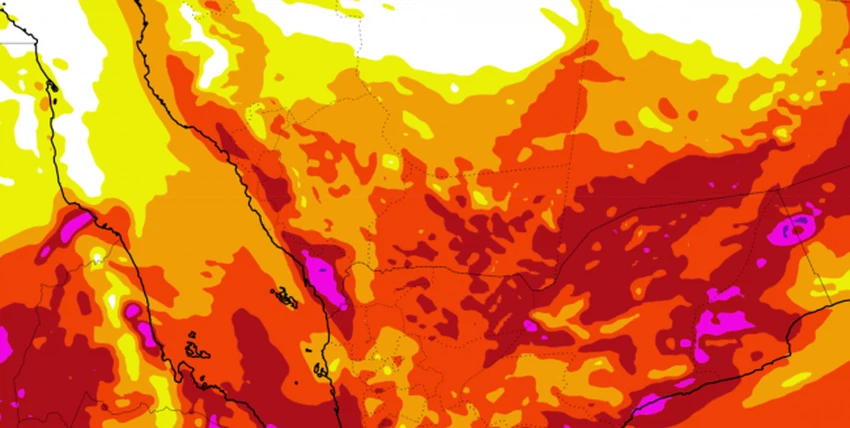المزيد من الأمطار على المرتفعات الجنوبية الغربية قد تمتد إلى تهامه
2017-07-24
2017-07-24T20:31:47Z
المصدر: حمد النوتي || للمتابعة على تويتر ![]() : 7amad_noty@
: 7amad_noty@
يُتوقع بحول الله تعالى تجدد هطول الأمطار فوق على المرتفعات الجنوبية الغربية باتجاه جازان وعسير وقد تمتد إلى تهامه وذلك خلال ساعات ظُهر الثلاثاء الموافق للثاني من ذي القعدة. أضف خبرك من هنا

مُؤشر العواصف الرعدية K - INDEX من المركز الأوروبي
وتشير خرائط النماذج العددية المُستلمة من المركز الأوروبي إلى ازدياد فرص هطول الأمطار في تلك المُناطق، ترافقها عواصف رعدية رُبما تكون قوية أحياناً.
ArabiaWeather Company is not responsible for the material displayed or published in ArabiaWeather Blogs, and bloggers are therefore fully responsible for their writings.
ArabiaWeather Company shall not be responsible for any republication. The materials published in the “Arabia Weather Blogs” in the various media, which puts anyone who publishes these blogs in the name of the Arabia Weather or quoting the Arabia Weather under liability and legal accountability.
ArabiaWeather Company shall not be responsible for any republication. The materials published in the “Arabia Weather Blogs” in the various media, which puts anyone who publishes these blogs in the name of the Arabia Weather or quoting the Arabia Weather under liability and legal accountability.
This article was written originally in Arabic and is translated using a 3rd party automated service. ArabiaWeather is not responsible for any grammatical errors whatsoever.
Arabia Weather App
Download the app to receive weather notifications and more..



